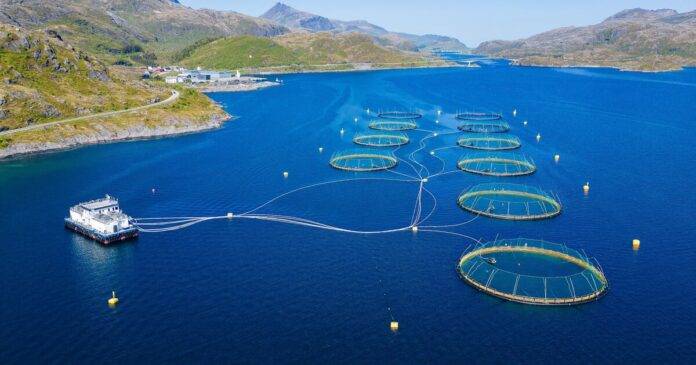The Norwegian salmon farming industry has experienced a significant increase in the quality of its salmon harvests, driven by a combination of factors such as mild sea temperatures, decreased jellyfish blooms, and the introduction of a new winter-ulcer vaccine. According to Filip Szczesny, a financial analyst at Kontali, this improvement in salmon quality has led to a shift in market dynamics, with a decrease in exports to EU countries for processing by up to 33 percent compared to the previous year. It is speculated that a higher percentage of the superior-grade salmon is now being retained for premium domestic markets.
Despite the positive developments in the Norwegian salmon industry, the EU as a whole is facing an oversupply of large fresh whole salmon. This oversupply, coupled with reduced demand from Asia, has resulted in a decrease in salmon prices within Europe. As a result, the industry may need to adapt its strategies to address the changing market conditions and ensure continued profitability.
In Chile, the winter harvest of coho salmon has reached record highs, with a 5 percent increase compared to the previous year. Additionally, average harvest weights have also seen a 3 percent increase. However, despite these positive trends, the overall salmon harvest for the year has decreased by 6 percent year-over-year. This decline in production could have implications for the Chilean salmon industry and may require adjustments in production strategies to maintain growth and profitability.
Similarly, Iceland has also experienced challenges in its salmon production, with low temperatures and ongoing fish health issues leading to a decrease in volume forecasts for 2025. These challenges highlight the importance of monitoring environmental conditions and addressing health issues in order to sustain a stable and productive salmon farming industry in Iceland.
Overall, the global salmon farming industry is facing a variety of challenges and opportunities as it navigates shifting market dynamics and environmental factors. It is crucial for industry stakeholders to stay informed about these developments and make strategic decisions to ensure the long-term sustainability and profitability of the salmon farming sector. By proactively addressing issues such as oversupply, changing demand patterns, and environmental concerns, the industry can position itself for continued growth and success in the future.




